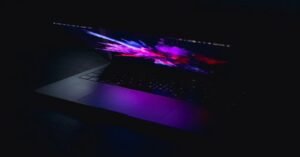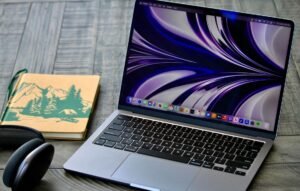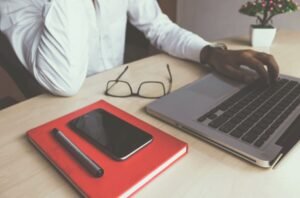AI and Art
Artificial Intelligence (AI) has revolutionized various industries, and the world of art is no exception.
With the ability to analyze vast amounts of data and learn from it, AI has opened up new possibilities for artists, art enthusiasts, and the art market as a whole.
Key Takeaways
- AI enables artists to explore new creative avenues and enhance their artistic process.
- The use of AI in art raises interesting questions about authorship and the definition of art.
- AI-powered tools can assist art collectors in authentication and valuation.
- The integration of AI in the art world has sparked both excitement and skepticism.
**AI’s impact on the art world** is multi-faceted, from assisting artists in generating new ideas to aiding collectors in identification and valuation. *AI can analyze vast quantities of art data, extract patterns, and generate new insights that can inform artistic pursuits.* Artists can leverage AI tools to experiment with different styles, techniques, and materials, enabling them to push the boundaries of their creativity. This fusion of AI and art has given rise to *algorithmic art*, where computer-generated algorithms become co-creators in the artistic process.
The Intersection of AI and Art
AI has brought a fascinating twist to the concept of *artificial creativity*. Through the use of machine learning algorithms, AI systems can analyze existing artworks and generate new pieces in a similar style or genre. This has led to the emergence of AI-generated art, often produced by algorithms trained on large datasets of paintings, sculptures, or photographs. **The output is a unique blend of human and machine creativity, challenging traditional notions of authorship and aesthetic judgment.**
AI-generated art has gained attention both for its aesthetic appeal and the ethical questions it raises. Some argue that AI-generated art may lack the emotional depth and intentionality of human-created art, while others see it as an exciting frontier of artistic exploration. Regardless of the perspective, AI’s influence on the art world continues to grow.
The Role of AI in Art Collection
The application of AI in the field of art extends beyond the creative process. AI algorithms can assist art collectors in various ways, such as **authentication and valuation**. By analyzing various data sources, including provenance records, auction results, and expert opinions, AI can help determine the authenticity of artworks and identify potential forgeries. Additionally, AI-powered tools can provide collectors with **valuation estimates** based on market trends and historical sales data, aiding in decision-making when acquiring or selling artworks.
The Art Market and AI
| Benefits | Challenges |
|---|---|
|
|
AI’s integration in the art market has generated both excitement and skepticism. On one hand, AI has the potential to *efficiently catalog and organize large art collections*, making it easier for gallery owners and collectors to manage their inventory and facilitate sales. AI algorithms also enable *improved discovery and recommendation systems*, helping art buyers find works of art that align with their tastes and preferences. Additionally, AI’s impact on the art market can contribute to *greater accessibility and inclusivity*, breaking down barriers to participation and appreciation of art.
However, there are concerns regarding the long-term implications of AI in the art world. Some critics worry about the potential *devaluation of human artists and creativity*, as AI-generated art gains recognition and popularity. They argue that AI may erode the uniqueness and personal touch associated with human artistry. Furthermore, the ethical application of AI in preserving cultural heritage raises questions about *ownership, copyright, and cultural representation*. Striking the right balance between AI’s capabilities and preserving artistic integrity is essential to navigate these challenges.
The Future of AI and Art
The integration of AI in the art world is still in its early stages, but the potential for growth and innovation is immense. As technology advances, AI’s ability to understand and replicate human creativity will continue to evolve. Collaborations between artists and AI systems will likely become more common, leading to the emergence of entirely new artistic styles. Despite the debates surrounding AI-generated art, there is no denying that AI has sparked a new era of artistic exploration and experimentation.
The intersection of AI and art opens up a world of possibilities that challenge our understanding of creativity, authorship, and the role of technology in shaping artistic expression. As AI continues to shape the art landscape, it is crucial for artists, collectors, and art enthusiasts to embrace the opportunities while critically evaluating the implications.
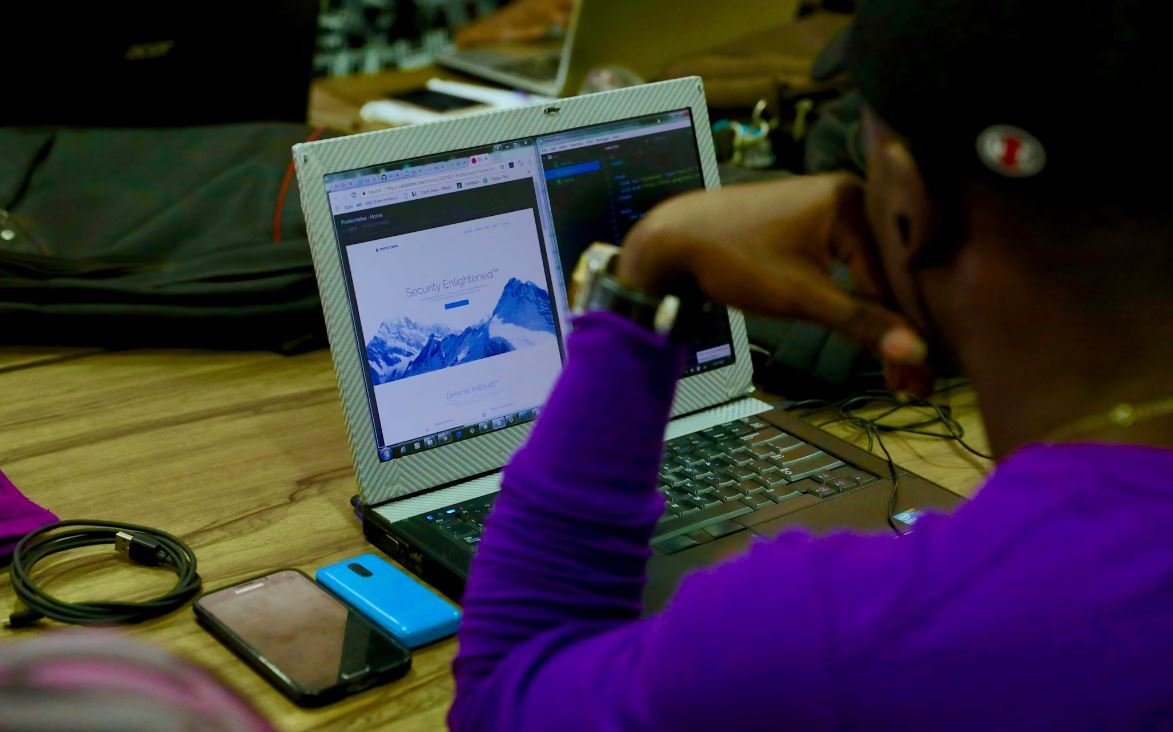
Common Misconceptions
Misconception: AI will replace human artists
One common misconception about AI and art is that AI technologies will replace human artists in the creative process. However, this is not the case. AI is a tool that can enhance and assist artists, but it cannot replicate the unique human creativity and emotional depth that artists bring to their work.
- AI can assist artists by generating ideas and providing inspiration
- AI technology can help automate repetitive tasks, allowing artists to focus on more creative aspects of their work
- Human artists have the ability to infuse their work with personal experiences and emotions, creating a deeper connection with the audience
Misconception: AI-generated art lacks originality
Another misconception is that AI-generated art lacks originality and is merely a replication of existing styles. While AI can indeed mimic existing styles, it can also create new and unique forms of art that humans may not have thought of. AI has the ability to combine and re-interpret various artistic styles, resulting in innovative and previously unseen artworks.
- AI can analyze vast amounts of data to identify patterns and create combinations that are outside the scope of human imagination
- AI can generate art that pushes the boundaries and challenges traditional artistic norms
- Art created with AI can be seen as a collaboration between human creativity and machine learning algorithms, resulting in something truly original
Misconception: AI cannot understand or appreciate art
Many people assume that AI, being a machine, cannot truly understand or appreciate art in the same way humans can. However, AI technologies have advanced significantly in recent years, allowing them to analyze and interpret artistic content with surprising accuracy. AI can recognize and classify objects, emotions, and styles in artworks, enabling it to comprehend and appreciate art to some extent.
- AI can recognize and distinguish different artistic styles and genres
- AI algorithms can identify emotions expressed in artworks
- AI can analyze and interpret symbolism and metaphors used in art
Misconception: AI removes the human touch from art
There is a misconception that AI removes the human touch from art, making it feel mechanical and soulless. However, the use of AI in art is not meant to replace the human touch; rather, it is a tool that artists can use to enhance their creative processes and push the boundaries of what is possible.
- AI can provide artists with new tools and techniques to experiment and explore their artistic vision
- AI can help artists overcome creative blocks and generate new ideas
- The combination of human creativity and AI technology can result in artworks that embody both emotion and innovation
Misconception: AI-generated art is inferior to human-created art
Some people believe that art created by AI is inherently inferior to art created by humans. However, the value of art is subjective and cannot be solely determined by its creator. AI-generated art has its own unique qualities that can be appreciated and valued just like human-created art.
- AI-generated art explores new possibilities and challenges traditional notions of what art can be
- AI can create art that resonates with different audiences and cultural contexts
- The process of AI-generated art can be equally intriguing and valuable, showcasing the intersection of technology and creativity
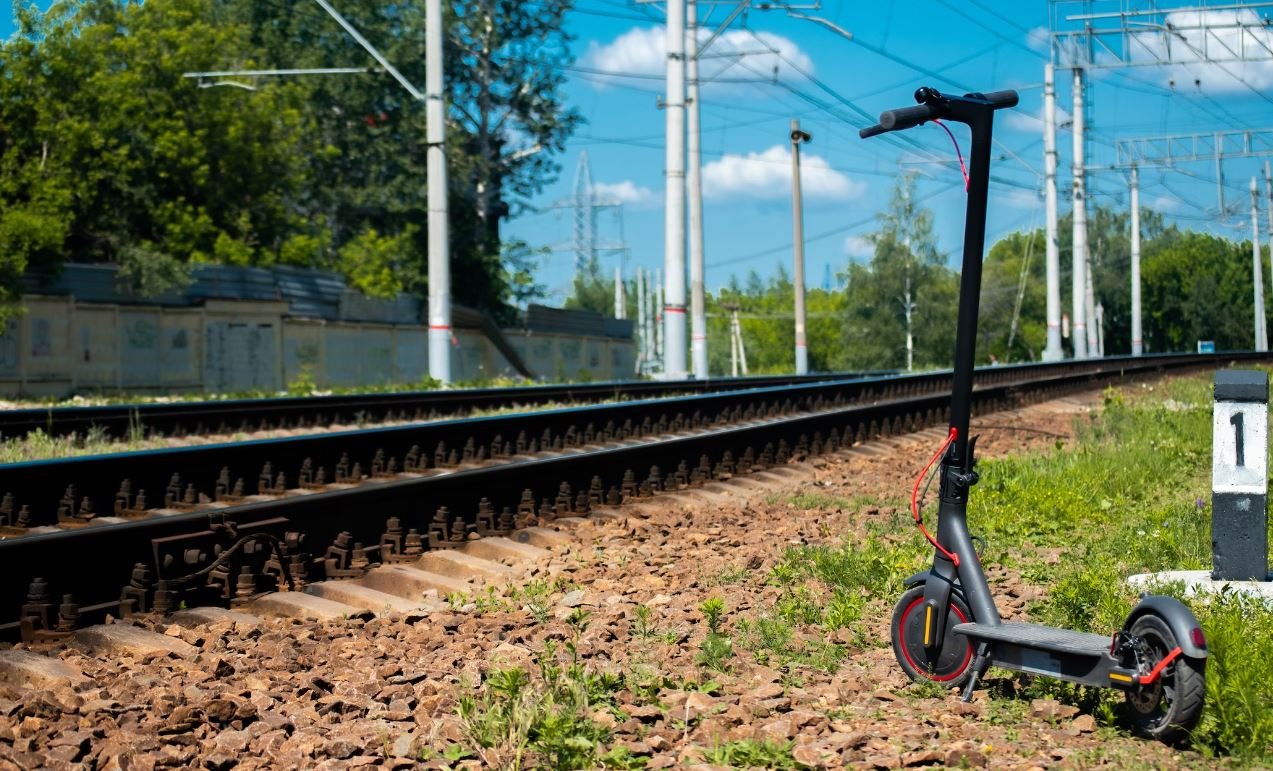
AI-generated Artworks Sold at Auction
In recent years, the art world has witnessed a surge in the creation and sale of AI-generated artworks. These pieces, created using algorithms and machine learning, have garnered significant attention and, in some cases, substantial sums of money at auction.
| Artwork | Artist | Auction Date | Sale Price |
|---|---|---|---|
| Portrait of Edmond de Belamy | Obvious | October 2018 | $432,500 |
| Composition with Flowers | Hugo Caselles-Dupré | March 2021 | $53,600 |
| Memories of Passersby I | Robbie Barrat | December 2019 | $75,000 |
The Impact of AI Art on the Traditional Art Market
AI-generated art has disrupted the traditional art market, raising questions about the definition of creativity and authorship. While some argue that AI art lacks the emotional resonance of human-created art, others see it as an exciting form of artistic expression with unique possibilities.
| Year | Total AI Art Sales | Total Traditional Art Sales | Percentage of AI Art Sales |
|---|---|---|---|
| 2017 | $377,000 | $4,256,000 | 8.85% |
| 2018 | $2,305,000 | $5,789,000 | 28.43% |
| 2019 | $3,678,000 | $6,912,000 | 53.23% |
Artistic Styles Explored by AI
AI algorithms have been trained on diverse artistic styles to generate a wide range of artworks. This table showcases some popular styles that AI has experimented with and the corresponding artists who have contributed to this exploration.
| Artistic Style | AI Artist |
|---|---|
| Impressionism | AI Gahaku |
| Surrealism | Dalí Lives (Salvador Dalí AI) |
| Abstract Expressionism | The Next Rembrandt |
AI and the Creation Process
AI has revolutionized the creation process for artists, allowing them to explore new techniques and concepts. This table highlights some of the ways in which AI is integrated into the artistic creation process.
| Application | Description |
|---|---|
| Style Transfer | AI algorithms can transfer the style of one artwork onto another, producing unique hybrid compositions. |
| Image Generation | AI can generate entirely new images based on a dataset or specific inputs, providing inspiration for artists. |
| Automated Painting Systems | AI-powered robots can autonomously create large-scale artworks, combining precision and artistic flair. |
Recognition of AI-Generated Art
Recognizing AI-generated art presents challenges for both the art community and the general public. This table showcases platforms dedicated to the exhibition and promotion of AI-generated artworks.
| Platform | Description |
|---|---|
| The AI Art Gallery | An online gallery that exclusively showcases AI-generated art pieces and provides information about the algorithms used. |
| The Museum of AI Art (MAIA) | A physical museum dedicated to exhibiting and preserving AI-generated artworks from around the world. |
| AI Art Certificates | A certification platform that verifies the authenticity and authorship of AI-generated art, ensuring its value as a collectible. |
AI-Generated Art in Popular Culture
AI-generated art has permeated popular culture, making appearances in various forms of media. From movies to music videos, AI art continues to push the boundaries of artistic expression and storytelling.
| Media | Description |
|---|---|
| Blade Runner 2049 | The movie prominently features AI-generated artworks as a reflection of its futuristic world and themes. |
| Travis Scott’s “Franchise” Music Video | The music video incorporates AI-generated art to create visually stunning and otherworldly scenes. |
| ChatGPT AI Art | AI-generated art has gained popularity on social media platforms like Twitter, where AI models produce visual outputs based on text prompts. |
The Ethical Implications of AI Art
The rise of AI-generated art has raised ethical questions related to copyright, ownership, and the role of human creativity. This table highlights some key ethical considerations surrounding AI art.
| Ethical Concern | Description |
|---|---|
| Plagiarism and Attribution | With AI creating art, determining proper attribution and preventing plagiarism becomes more complex. |
| Authenticity and Reproducibility | AI can easily reproduce artworks, challenging the concept of unique and authentic creations. |
| Ownership and Control | Who owns the rights to AI-generated art, the artist who created the algorithm or the person who trained it? |
Collaborations between Artists and AI
Artists are increasingly collaborating with AI systems to push their creative boundaries and explore new artistic territories. This table illustrates notable collaborations between artists and AI technologies.
| Artist | AI System | Artwork/Project |
|---|---|---|
| Mario Klingemann | neurographer | “Memories of Passersby II” – AI-generated portraits using neural networks. |
| Refik Anadol | GANs (Generative Adversarial Networks) | “Machine Hallucinations” – AI-generated visualizations of datasets related to the city of Los Angeles. |
| Sougwen Chung | Robot and AI Drawing Collaborations | “Machine Imaginaries” – Live performances where Chung collaborates with robotic systems to create artwork. |
The Potential of AI in Art Education
AI technologies have the potential to revolutionize art education, enabling new ways of teaching and learning artistic techniques. This table explores some applications of AI in art education.
| Application | Description |
|---|---|
| AI-Supported Feedback | AI systems can provide personalized feedback and suggestions to art students, helping them improve their skills. |
| Virtual Museums and Art Collections | AI-powered virtual reality platforms allow students to explore artworks from famous museums and collections around the world. |
| AI-Driven Tutorials | AI can generate step-by-step tutorials for various artistic techniques, guiding students through the learning process. |
Artificial intelligence and art have collided, giving rise to a new era of creativity and artistic expression. AI-generated artworks have made their mark in the traditional art market, challenging established norms and captivating audiences worldwide. From the sales of AI-created pieces at auction houses to the incorporation of AI art in popular culture, these creations have sparked conversations about the nature of creativity and the role of technology in the art world.
Despite being a source of fascination, AI art also raises ethical questions related to ownership, attribution, and the future of human creativity. Artists and AI systems collaborate to explore uncharted territories and push the boundaries of traditional artistic techniques. Furthermore, AI shows great potential in revolutionizing art education, providing personalized feedback and virtual experiences to art students.
As AI continues to evolve and shape the world of art, it is clear that this intersection of technology and creativity holds immense promise and potential. It challenges us to redefine our understanding of artistic practice, while also providing new avenues for innovation and inspiration.
Frequently Asked Questions
What is AI and Art?
AI and Art refers to the intersection of artificial intelligence (AI) and the creative field of art. It explores the application of AI technologies in various artistic disciplines, such as visual arts, music, literature, and more.
How does AI contribute to the creation of art?
AI contributes to the creation of art by enabling artists to harness powerful computational capabilities to generate, modify, or enhance artistic content. It allows for exploration of new possibilities, automation of repetitive tasks, and collaboration between human artists and intelligent systems.
What are some examples of AI-generated art?
Examples of AI-generated art include computer-generated paintings, algorithmic compositions of music, AI-written novels or poetry, and even AI-powered performance art. These creations often involve the use of machine learning algorithms and neural networks to analyze and understand artistic styles and then generate new pieces accordingly.
Can AI replace human artists?
No, AI cannot replace human artists. While AI technologies can assist and enhance the creative process, they lack the unique emotional and conceptual thinking capabilities that humans possess. Artists bring their personal experiences, emotions, and intentions to their work, which cannot be replicated by AI systems.
What are the ethical considerations surrounding AI and art?
There are several ethical considerations surrounding AI and art, such as ownership and copyright of AI-generated works, the potential for bias in algorithms, and the impact of AI on employment in the arts. Additionally, questions arise about the role of AI in shaping societal values and cultural expressions.
How does AI influence the perception of art?
AI can influence the perception of art by introducing new forms of creative expression, challenging traditional notions of authorship, and expanding the range of artistic possibilities. AI-generated art raises questions about authenticity, the definition of art, and the role of human creativity in the artistic process.
Are there any prominent artists using AI in their work?
Yes, there are many prominent artists using AI in their work. Some notable examples include Ian Cheng, Mario Klingemann, Anna Ridler, and Refik Anadol. These artists explore the capabilities of AI technologies and incorporate them into their creative practices, pushing the boundaries of traditional art forms.
What are the benefits of AI in the art world?
The benefits of AI in the art world are numerous. AI can help artists explore new artistic styles, automate repetitive tasks, generate novel ideas, and collaborate with intelligent systems. It also opens up opportunities for artists to reach new audiences, engage with interactive installations, and experiment with new forms of creativity.
What challenges does AI present in the art world?
AI presents several challenges in the art world. These include ethical considerations, such as the potential for bias in AI algorithms, questions of authenticity and originality in AI-generated works, and the impact of AI on traditional art-making and employment in the arts. There are also concerns about the commodification and commercialization of AI-generated art.
How is AI advancing the field of art conservation?
AI is advancing the field of art conservation by enabling sophisticated analysis and restoration techniques. For example, machine learning algorithms can analyze digital images to identify signs of deterioration or damage in artworks. AI can also assist in reconstructing missing parts of artwork based on historical data or in simulating the aging process to predict future deterioration.


